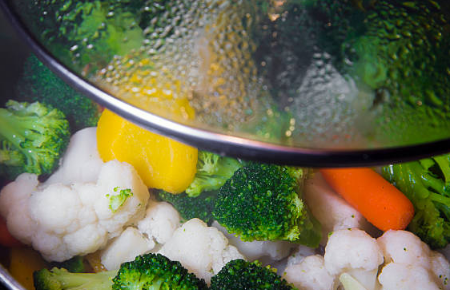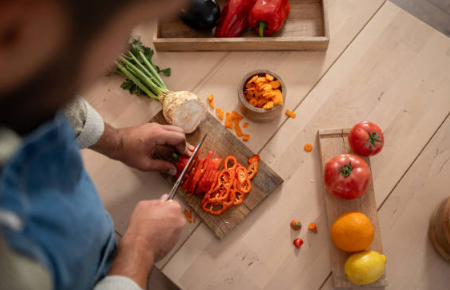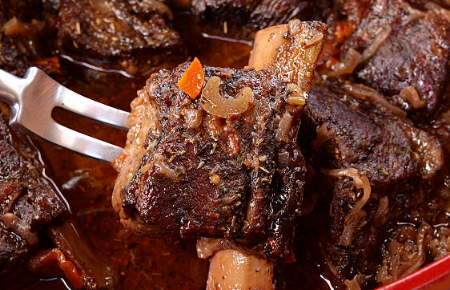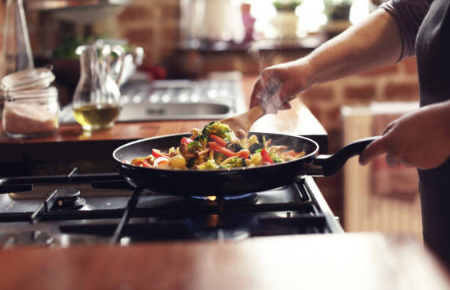How to Blanch Vegetables to Improve Texture and Retain Their Bright Color

How Long to Grill Steak for Perfect Results
June 15, 2025
How to Stir-Fry Vegetables
June 15, 2025You’ve probably heard cooking shows (or your mom) mention the term “blanching,” but do you know how to blanch vegetables like green beans? Now you will. Blanching is a quick heating and cooling process where fruits or vegetables are briefly immersed in boiling water and then transferred to ice water to rapidly stop the cooking. This quick and simple (yet highly effective) technique is perfect for preparing vegetables for canning or freezing, as it improves texture and helps retain their vibrant color.
Why Should I Learn How to Blanch Vegetables?
Many vegetables, such as carrots, peas, and asparagus, are blanched before freezing to maintain their color and texture. Here are a few more reasons why you should incorporate blanching into your food prep:
-
Blanching loosens the skins of tomatoes and peaches, making peeling easy.
-
When freezing vegetables, blanching slows the activity of natural enzymes, preventing flavor, texture, and color loss.
-
Blanching cleans the surface of fruits and vegetables, removing dirt and bacteria, and it can reduce bitterness.
-
It brightens the color of some vegetables, especially broccoli and other green veggies. Vibrantly blanched vegetables look great on a party platter (and usually get eaten faster than raw veggies).
-
Blanching helps slow the loss of nutrients.
-
For vegetables that take longer to cook, you can blanch them before grilling, especially when used in kabobs alongside faster-cooking produce and meats.

How to Blanch Vegetables
To blanch any vegetable, start by filling a large pot with water. Use 1 gallon of water for every pound of prepared vegetables.
-
Bring the water to a boil. Place the cleaned and cut vegetables into the boiling water (or place them in a metal basket and lower it into the water, covering with a lid).
-
Cook the vegetables for 1 to 5 minutes (see example times below). Once the vegetables turn vibrant in color, they’re ready.
-
Fill a clean large bowl with ice water. After blanching, use a slotted spoon to remove the vegetables from the boiling water.
-
Immediately transfer the vegetables into the ice water. Cool them for the same amount of time as the blanching. Drain them well.
Blanching Time for Vegetables
Not all vegetables require blanching, but here are the most common ones that benefit from the technique:
-
Asparagus: Blanch small asparagus for 2 minutes, medium for 3 minutes, and large for 4 minutes.
-
Broccoli: Blanch small florets for 3 minutes. At this point, the broccoli should be bright green and slightly softened.
-
Carrots: Blanch whole small carrots for 5 minutes, and cut carrots for 2 minutes.
-
Beans (green beans, Italian beans, snap beans, and wax beans): Cook in batches. Blanch small beans for 2 minutes, medium for 3 minutes, and large for 4 minutes.
-
Peas (English peas or green peas): Blanch for 1.5 minutes.

How to Blanch Tomatoes or Peaches
Blanching helps tomatoes peel easily and preserves their quality for freezing or canning. The same method works for peeling peaches. Once the water is boiling, follow these steps:
-
Use a sharp paring knife to make a shallow “X” on the bottom of each tomato. This helps the skin crack when blanched, making peeling easier.
-
Place 4 to 6 tomatoes in batches into the boiling water and soak for 30 to 60 seconds, until the skin starts to crack. Use a slotted spoon to turn the tomatoes so all sides are exposed to the water.
-
After peeling, carefully place the tomatoes into the ice water bowl. Once cool, remove them from the ice water and pat them dry with a kitchen towel.
-
Now, peel the tomatoes. The skin should come off easily, separating into two to four pieces.
How to Blanch Corn
Place the corn cobs (a few at a time) into boiling water and cook for 4 minutes. After cooling in ice water, remove the kernels and cut them off. You can either eat them immediately or store them in freezer bags.
Blanched vegetables will become tender and tasty. You can use them in your favorite dishes or freeze them to enjoy fresh vegetables later. Just remember to label them and note the date before freezing!



